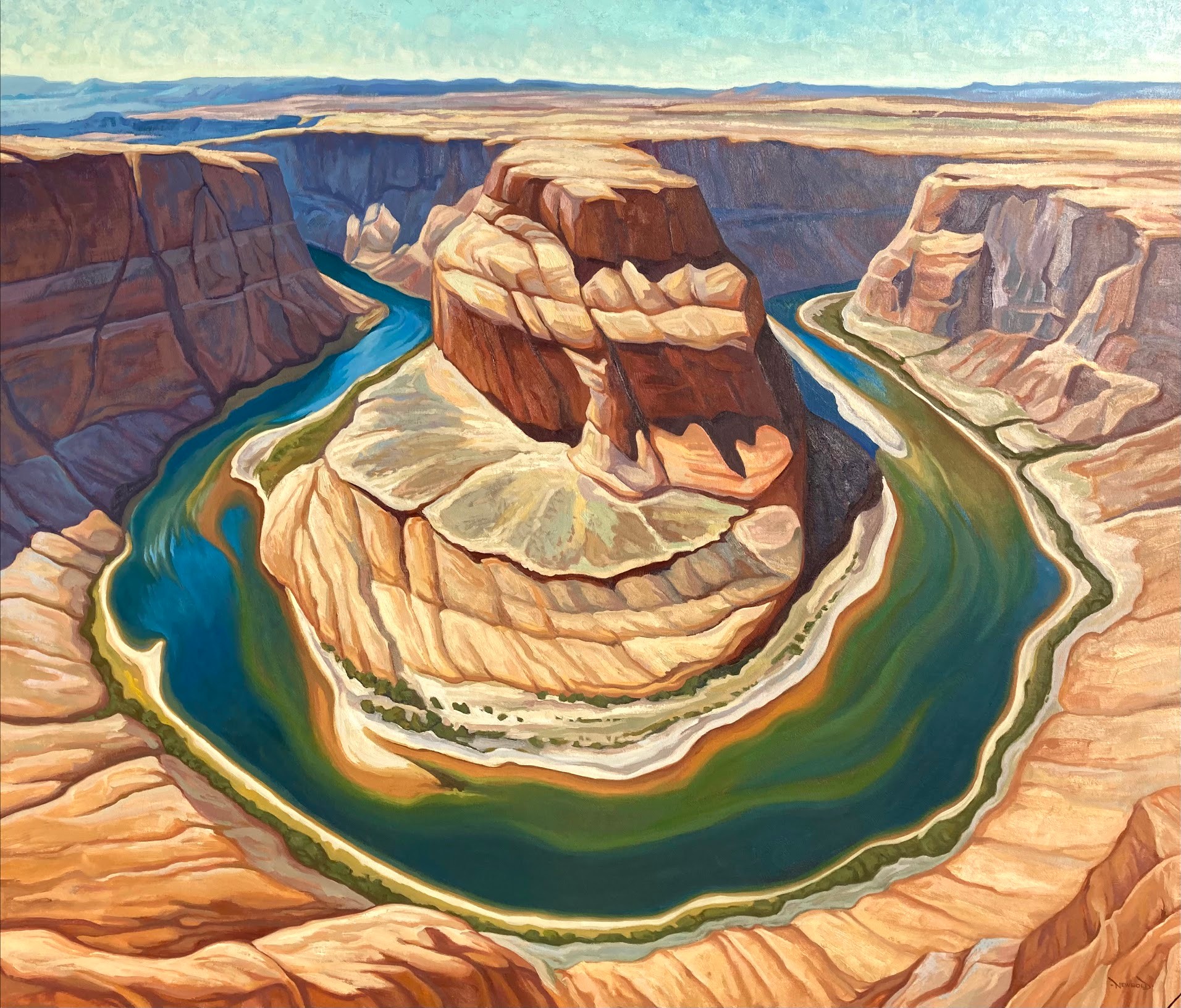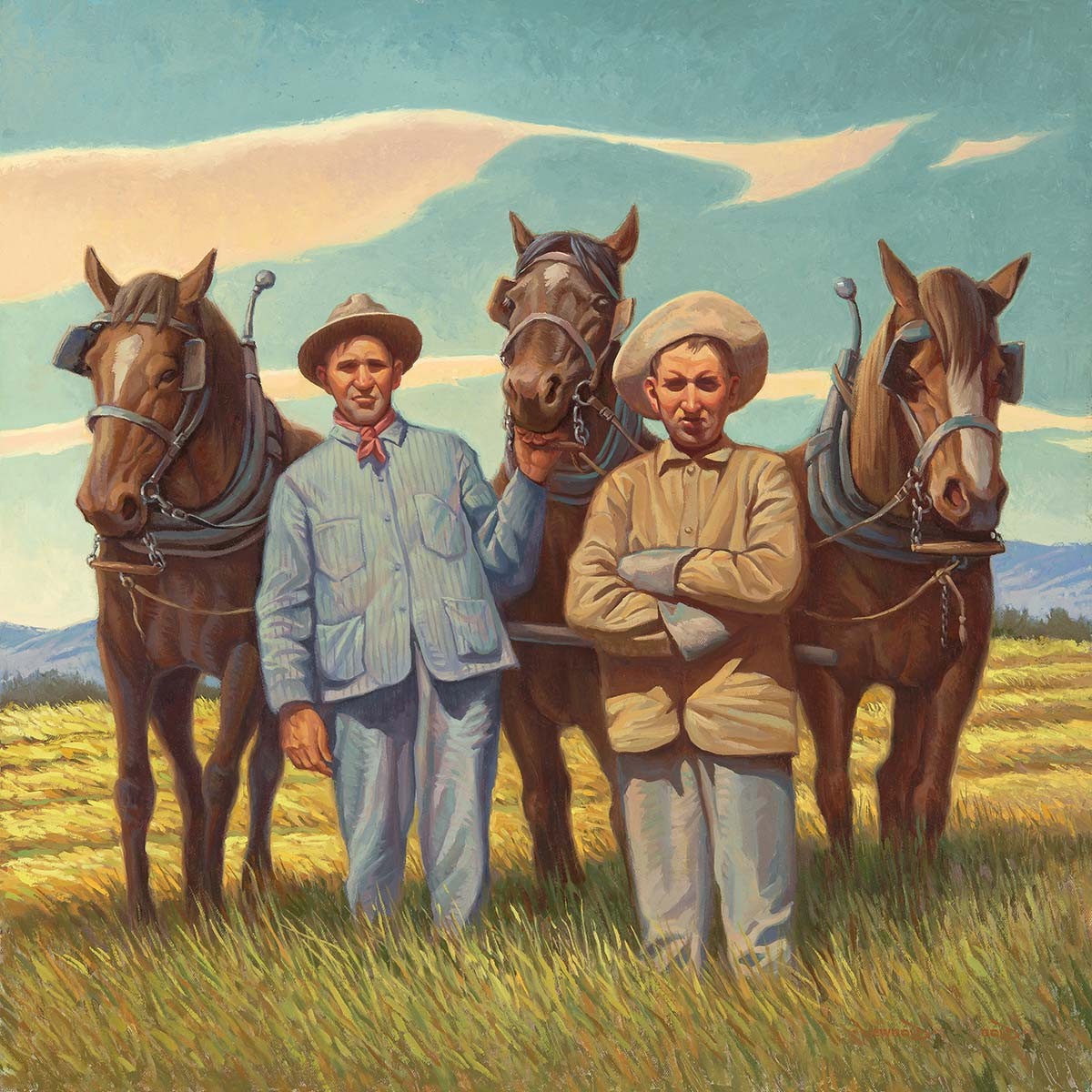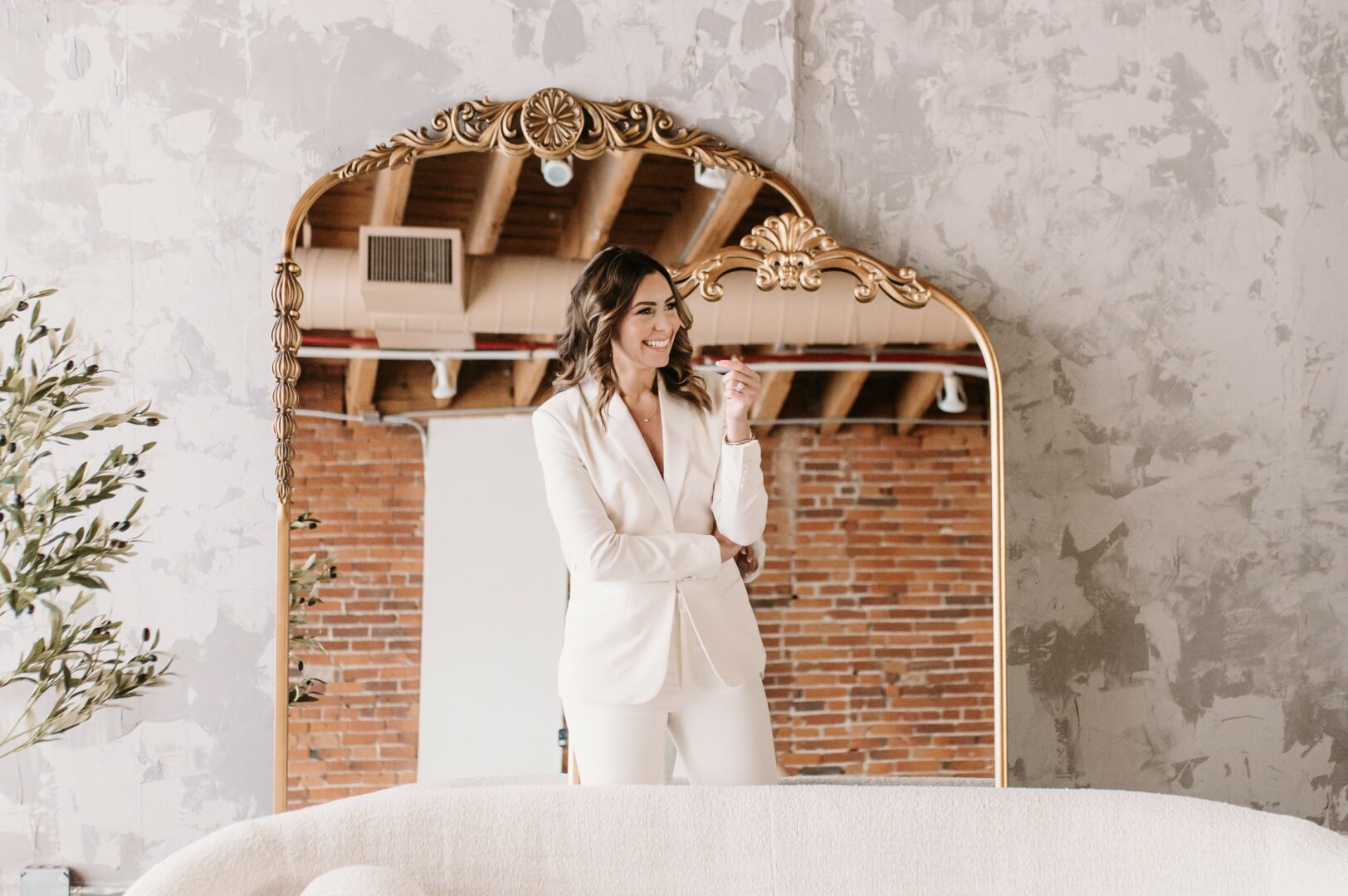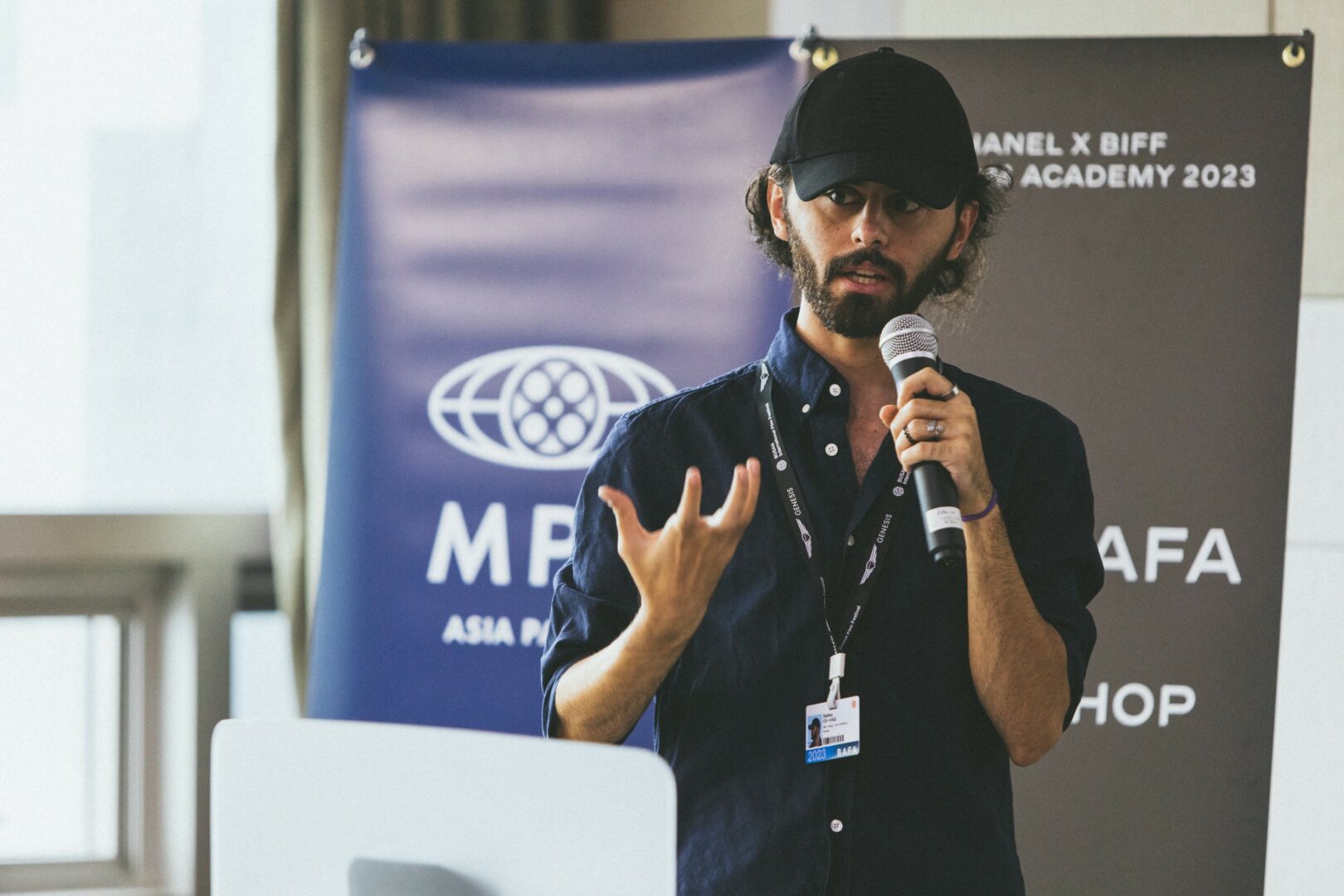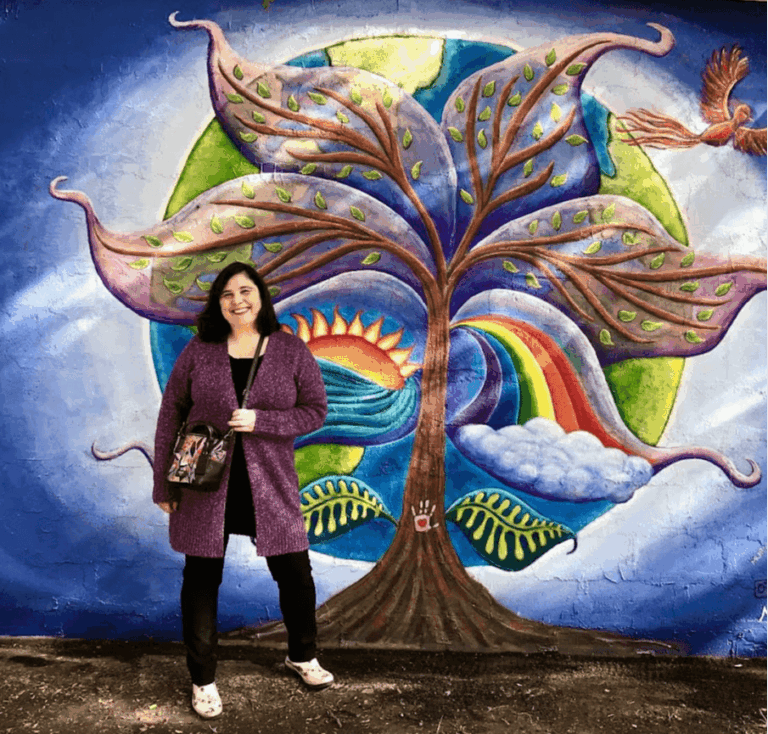Alright – so today we’ve got the honor of introducing you to Greg Newbold. We think you’ll enjoy our conversation, we’ve shared it below.
Greg, so great to be with you and I think a lot of folks are going to benefit from hearing your story and lessons and wisdom. Imposter Syndrome is something that we know how to describe, but it’s something that has held people back forever and so we’re really interested to hear about your story and how you overcame imposter syndrome.
Art isn’t a practical career choice. I can think of countless other options that would probably result in a higher financial standard of living. But for me and many other artists I know, the decision wasn’t really a choice, but rather a calling. It was something I was compelled to pursue.
Along with it comes the requisite feelings of inadequacy. There’s plenty of second guessing, lots comparisons, the nearly endless doubts. What if I can’t make this thing good enough? What if nobody cares about what I just made? Even when you sell something, the first thought is often “what if I never sell another painting?” The cards feel stacked against you.
Art is in many regards, a luxury item. And yet, I can’t imagine living life without it. I am overwhelmed with the beauty of the world around me and driven to try to capture that beauty in paint. So I paint. I keep after it even when things don’t play out exactly like I want. I try to quiet the voices in my head. Tune out the naysayers that say you’ll never make it, and focus on making something beautiful. I try to focus on bringing that vision in my head to life for others to enjoy. To try to connect my soul with the soul of the viewer through paint.
And so far, I’ve never failed to get through a rough day or a hard patch and I keep creating. Artists are survivors. Any artist worth their salt will tell you that the battle never ends, you just keep getting back up and keep creating. I intend to be one of the survivors.
Let’s take a small detour – maybe you can share a bit about yourself before we dive back into some of the other questions we had for you?
I’ve always been an artist. For as long as I can remember, I have drawn and painted, I’ve made things, fixed things and viewed the world around me with the wonder and awe of an artist’s eye.
Sometime around eighth or ninth grade when I sold my first paintings, I knew that I was going to be an artist. I had no idea what that would look like at the time, but it felt like the only logical path, however illogical that deciding to draw and paint things as your life’s pursuit can be for a young person with concerned parents. Luckily my folks were supportive and supplied me with all the materials a budding artist needed to pursue this unlikely dream.
By the time I entered college, the dream focused itself toward becoming a commercial illustrator. To me, Illustration provided concrete outcomes. Clients need art for their projects and you can provide it. Make the work, get paid, and then to top it off, you get to see it published. It all made perfect sense. And it was fulfilling for many years. But things changed. I began to feel stagnant and in need of something more.
I knew I needed to stretch and grow again. Digital tools were encroaching into the illustration markets and I needed to adapt. I also felt the pull of oil painting having worked exclusively in acrylic for many years. I went back to school and I earned my MFA degree with the dual goal of learning to paint digitally and also to dive headlong into learning how to express my ideas in oil paint.
Today, most of my illustration work is created in a hybrid traditional/digital style and most of my gallery work is painted in oil. Expanding my toolbox has allowed me to be more flexible in the ways I work and more able to tackle any project that I want to take on.
I have illustrated over a dozen picture books for kids working with many of the most notable publishers in the industry. My most recent books introduce kids to dozens of famous artists and art styles by posing the question “what if?” They are If Picasso Painted a Snowman, If Da Vinci Painted a Dinosaur and If Monet Painted a Monster, all from Tilbury House Publishers.
I also take great pleasure in painting the glorious western landscapes near where I live and I love being represented by some of the finest Western art galleries around being Manitou Galleries in Santa Fe, NM; Medicine Man Gallery in Tucson, AZ and David Ericson Fine Art in Salt Lake City, UT.
Each day provides fresh opportunities for me to capture the beauty and story of this world on canvas and I am blessed to be able to pursue my passion as a full time artist.
Looking back, what do you think were the three qualities, skills, or areas of knowledge that were most impactful in your journey? What advice do you have for folks who are early in their journey in terms of how they can best develop or improve on these?
Drawing is the basis for all visual art. It doesn’t matter what your end expression looks like, whether it is totally realistic or naturalistic or whether it is completely abstract and non representational. Training your mind to observe and see things as they are and then being able to translate those things realistically to the paper or canvas is a skill that will aid any artist in their pursuit of self-expression. It’s less about the end expression and more about the seeing and understanding what you are seeing. In my opinion, it’s not possible to fully express your vision with a half empty toolbox. Drawing is probably the most important tool you can have at your disposal. Learn to draw and continue to draw.
Learn to create in spite of fear. Fear stops many people before they even start. Failure isn’t just a possibility, it is inevitability. I rarely am able to create something that is exactly like I first envisioned it. In that regard, everything I do is a failure. But I don’t let it stop me from making that thing.
Half of the fun of painting is seeing what comes out and then course correcting along the way. Reacting to a previous mark may spur a different choice for the next one. Each stroke builds on the previous one until you have created something. Whatever the end result is becomes the product of the journey and if pursued with passion, it is almost always a success in one way or another. Failure only happens when you fail to start.
Art should be fun. If you’re not having fun there’s a good chance you’re doing it wrong. For a long time (and sometimes still to this day) I put too much pressure on my art to be great, to sell, to win awards. That often sucks too much of the joy out of the process. Don’t put too many expectations on your art. Go back to the day when art was just something that you looked forward to because it brought joy. Make something with no expectations. Do something because it sounds fun or makes you laugh. It’s unfair to your art to require it to provide for your soul and your bank account at the same time. Sure, you want it to do both, and I am fortunate that for the most part, it has worked out that way for me.
But if you have to choose, let art feed your soul first. Bask in the wonder of creating something that didn’t exist before. Love your art and it will begin to love you back. If you do this, your art will have honesty and others will feel that honesty As those connections begin to form over time, maybe your art can begin fill your piggy bank as well.
Is there a particular challenge you are currently facing?
Right now I feel that my biggest challenge is one of personal voice. I’ve spent long enough developing my skills that I feel quite competent in being able to create a good work of art. Illustration has been a great path as far as developing good working habits like communicating with clients solving problems and meeting deadlines. But illustration is mostly solving other’s visual problems and providing imagery that helps tell someone else’s story, but hopefully using your own voice as the vehicle of expression.
As I venture deeper into gallery painting the question most pressing on my mind is what story do I want to tell now and what is the most honest or interesting way to tell it? I’m finding that I need to keep my own vehicle of expression tuned up and full of fuel.
I do this by filling my own tank. I visit museums, I talk to other artists, and I get out in nature as often as I can. I ask myself pertinent questions like how can I create something that will connect with my audience in a meaningful way? What subject or story or mood will people respond to?
Then I keep coming back to questions like what do I love? What sorts of subjects do I respond to? How do I want to feel when I look at a painting? What types of stories do I enjoy? I think that if I don’t love or enjoy what I am painting, then why would anyone else love it. So the struggle becomes finding the mid-ground, the Venn diagram of where what I like also resonates in an impactful way with the viewing public. I want my work to connect with people on a certain level where they can find themselves in it as well.
Contact Info:
- Website: greg@gregnewbold.com
- Instagram: https://www.instagram.com/gregnewboldart/
- Facebook: https://www.facebook.com/gregnewboldart/
- Other: https://www.medicinemangallery.com/collections/newbold-greg
https://legacygallery.com/artist/greg-newbold/

